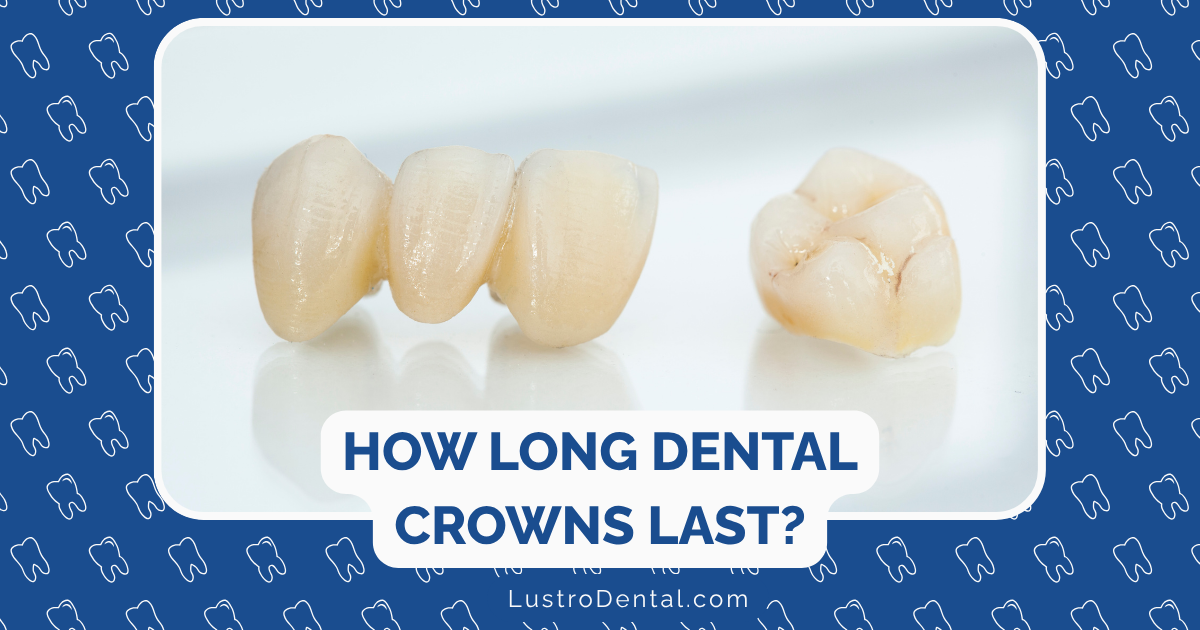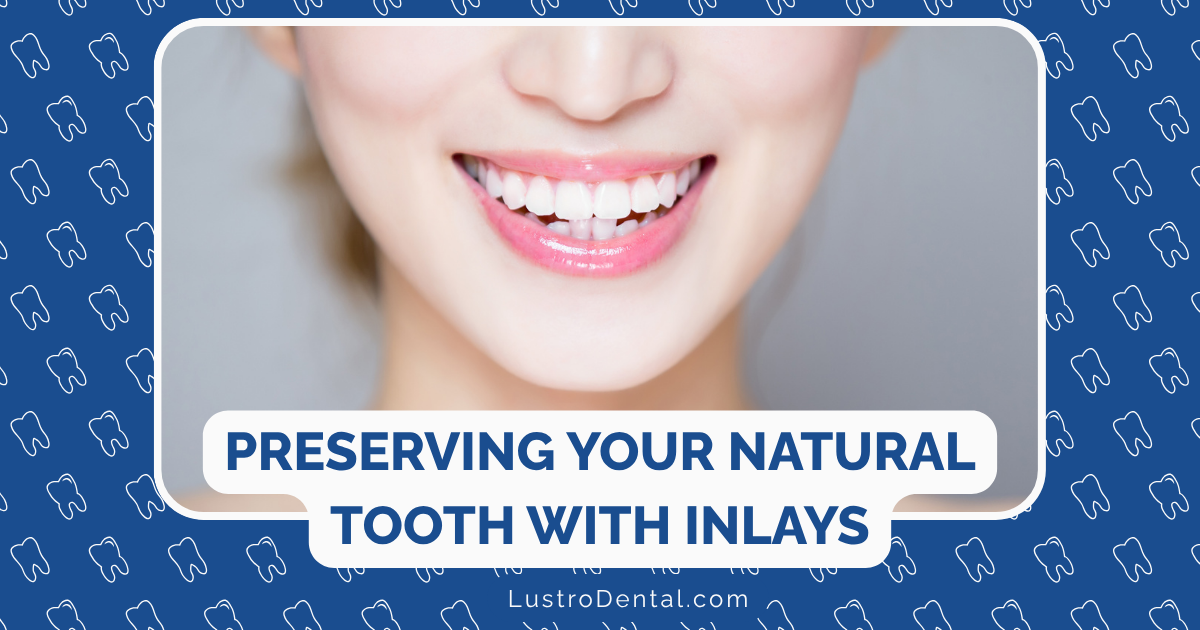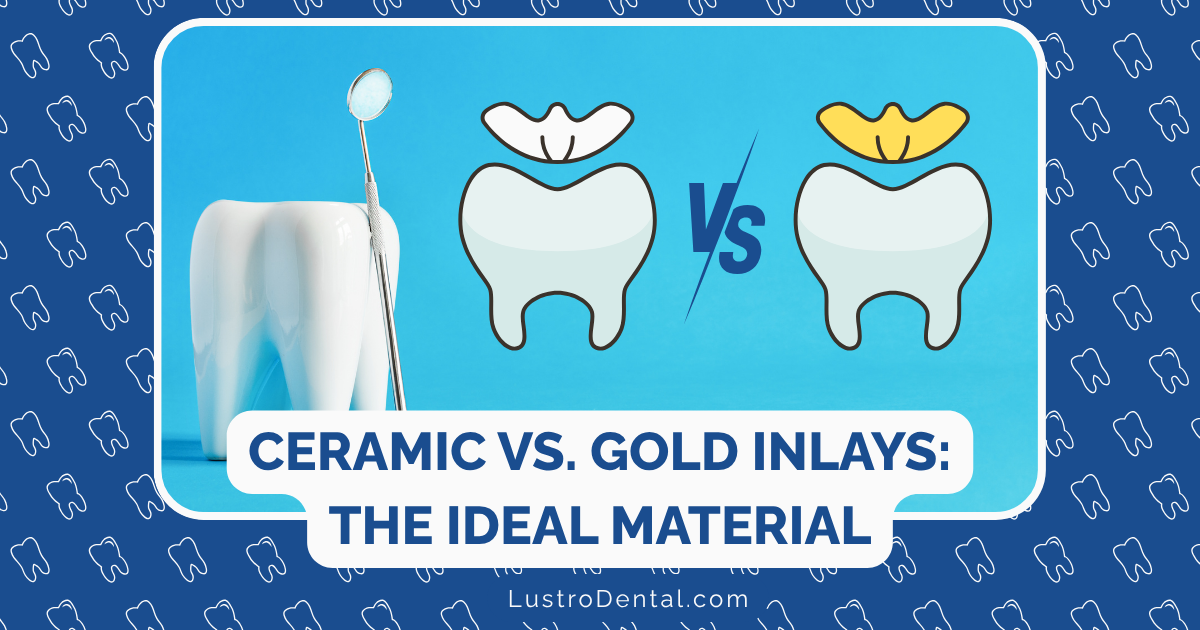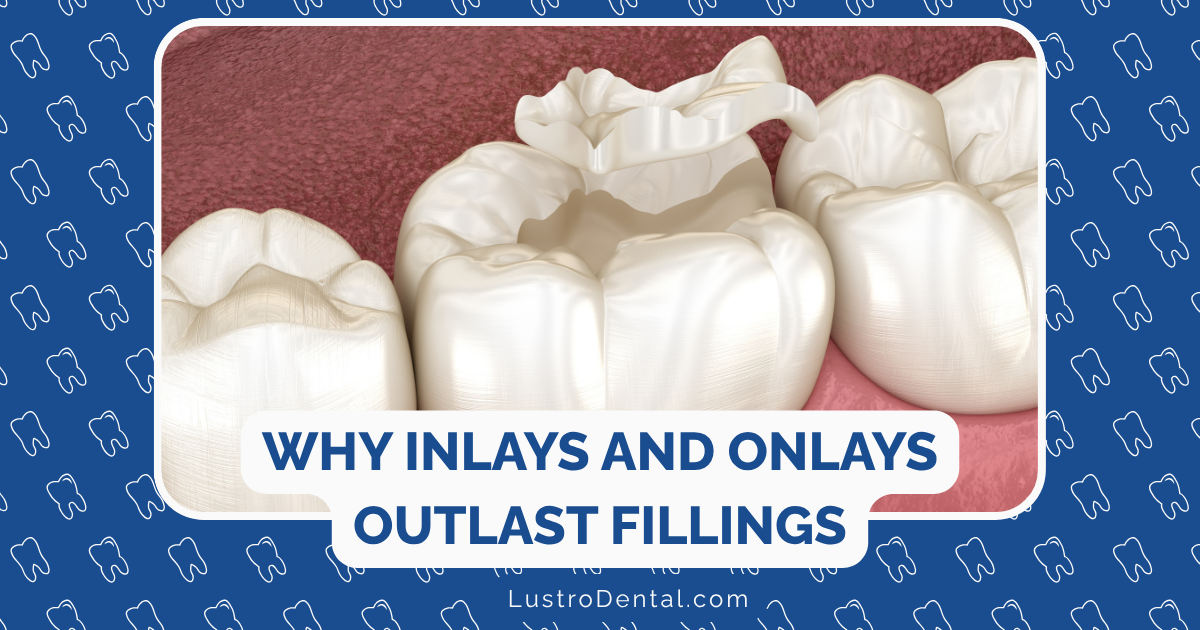The Real Lifespan of Dental Crowns: Factors That Extend or Shorten Durability

“How long will my crown last?” It’s one of the most common questions I hear from patients considering this restoration. The answer isn’t as straightforward as you might hope—dental crowns don’t come with a simple expiration date. Instead, their longevity depends on a complex interplay of factors ranging from the materials used to your daily habits.
Understanding these factors isn’t just about getting your money’s worth (though that matters too). It’s about making informed decisions about your oral health and knowing when a crown might need attention before it fails completely.
As someone who’s helped countless patients navigate dental restorations, I’ve seen firsthand how dramatically crown lifespans can vary. Let’s explore what really determines how long your dental crown will last and what you can do to maximize its lifespan.
The Truth About Dental Crown Longevity: What Research Shows
Before diving into specific factors, let’s establish some baseline expectations based on current research:
According to a comprehensive study published in the Journal of Prosthetic Dentistry that tracked over 2,300 crowns, 97% remained functional at the 10-year mark, while approximately 85% were still performing well after 15 years.
However, these numbers tell only part of the story. The survival rate begins to decline more rapidly after the 15-year mark, with about 70.5% of crowns still functional at 20 years.
Dr. Sarah Johnson, a prosthodontist at the American College of Prosthodontists, explains: “While we often quote 10-15 years as the average lifespan for dental crowns, I’ve seen patients maintain the same crowns for 30+ years with excellent care. Conversely, I’ve had to replace crowns after just a few years due to certain risk factors.”
Crown Materials: The Foundation of Durability
Perhaps the most significant determinant of a crown’s potential lifespan is the material from which it’s made. Each material offers different advantages and limitations:
Gold Alloy Crowns
Average lifespan: 20-30+ years Survival rates: 96% at 10 years, 87% at 20 years, 74% at 30 years
Gold remains the gold standard for longevity. Its exceptional durability stems from its resistance to fracture and minimal wear on opposing teeth. However, its metallic appearance limits its use primarily to posterior teeth.
Zirconia Crowns
Average lifespan: 15-20+ years Survival rates: 95% at 10 years, 84% at 15 years
Zirconia has revolutionized dental restorations with its exceptional strength (comparable to metal) combined with tooth-colored aesthetics. Modern multilayered zirconia offers improved translucency while maintaining impressive durability.
Lithium Disilicate (e.max®) Crowns
Average lifespan: 10-15 years Survival rates: 96% at 5 years, 90% at 10 years
This glass-ceramic material offers excellent aesthetics with good strength, making it popular for front teeth. While not as strong as zirconia, its optical properties create highly natural-looking restorations.
Porcelain-Fused-to-Metal (PFM) Crowns
Average lifespan: 10-15 years Survival rates: 94% at 5 years, 85% at 10 years
These traditional crowns combine a metal substructure with a porcelain exterior. While they offer good strength, they can develop visible dark lines at the gumline over time as gums recede.
All-Porcelain/Ceramic Crowns
Average lifespan: 5-15 years Survival rates: 90% at 5 years, 84% at 10 years
Traditional all-porcelain crowns offer excellent aesthetics but are more prone to fracture than stronger materials, particularly when used on molars.
Resin Crowns
Average lifespan: 5-10 years Survival rates: 87% at 5 years, 66% at 10 years
Generally used for temporary restorations, resin crowns are more affordable but wear down faster and are more prone to fracture.
Location Matters: How Tooth Position Affects Crown Longevity
The placement of your crown significantly impacts its lifespan:
Molars: The Heavy Lifters
Crowns on molars experience the greatest chewing forces—up to 170 pounds per square inch during normal chewing and significantly more if you grind your teeth. This mechanical stress accelerates wear and increases fracture risk.
Research from the Journal of Dental Research indicates that crowns on molars have approximately 1.5 times higher failure rates than those on anterior teeth.
Premolars: The Middle Ground
These teeth experience moderate chewing forces and generally show better crown longevity than molars but more wear than anterior crowns.
Anterior Teeth: The Showcase
Front teeth experience less mechanical stress, allowing for longer-lasting restorations. However, they face different challenges:
- Higher aesthetic demands may lead to thinner crowns with less structural support
- Social functions like biting into foods can place unusual stresses on these teeth
- They’re more vulnerable to trauma from accidents
Dr. Michael Chen of the University of Michigan School of Dentistry notes: “When recommending crown materials, we consider not just aesthetics but the biomechanical forces each tooth experiences. For instance, a zirconia crown might be ideal for a molar, while lithium disilicate might be perfect for a front tooth.”
The Hidden Influence: How Your Daily Habits Affect Crown Durability
Your personal habits and oral care routine can dramatically extend—or significantly shorten—your crown’s lifespan:
Oral Hygiene: The Foundation of Crown Longevity
Poor oral hygiene doesn’t damage the crown material itself but can lead to decay at the crown margins (where the crown meets the tooth). This “secondary decay” is actually one of the most common reasons for crown failure.
A study published in the International Journal of Prosthodontics found that patients with excellent oral hygiene experienced 60% fewer crown failures than those with poor hygiene.
Bruxism (Teeth Grinding): The Silent Destroyer
Chronic teeth grinding can generate forces exceeding 500 pounds per square inch—far beyond what even the strongest crown materials are designed to withstand long-term.
According to research from the Journal of the American Dental Association, patients with untreated bruxism experience crown failures at 2-3 times the rate of non-bruxers.
Dietary Choices: The Daily Impact
Certain foods and habits pose particular risks to crowns:
- Hard foods (ice, hard candy, nuts) can cause immediate fractures
- Sticky foods (caramels, taffy) can dislodge crowns, especially if the cement seal is compromised
- Acidic foods and beverages can accelerate wear of certain materials over time
Oral Habits: The Unconscious Risks
Using teeth as tools (opening packages, biting fingernails, holding items) places abnormal forces on crowns and dramatically increases failure risk.
The Underlying Foundation: How Your Natural Tooth Affects Crown Success
The condition of the tooth beneath your crown plays a crucial role in long-term success:
Root Canal Treated Teeth: The Special Case
Teeth that have undergone root canal therapy are more brittle and have a higher crown failure rate. Research indicates that endodontically treated teeth have 1.3-1.9 times higher crown failure rates than vital teeth.
Dr. Lisa Rodriguez, an endodontist at the American Association of Endodontists, explains: “After root canal treatment, teeth lack the blood supply that keeps natural teeth resilient. While crowns protect these teeth, the underlying structure is inherently more fragile.”
Remaining Tooth Structure: The Critical Foundation
The amount of natural tooth structure remaining significantly impacts crown longevity. Teeth with minimal structure may require posts for retention, which can increase the risk of root fracture over time.
A 2023 study in the Journal of Prosthetic Dentistry found that teeth with less than 30% remaining coronal structure had nearly twice the failure rate of those with more substantial structure.
Periodontal (Gum) Health: The Supporting Cast
Healthy gums provide crucial support for crowned teeth. Gum recession can expose crown margins, increasing the risk of decay and compromising aesthetics.
The Quality Factor: How Dental Expertise Influences Crown Lifespan
The skill of your dental team significantly impacts crown longevity:
Preparation Design: The Hidden Foundation
Proper tooth preparation creates the ideal foundation for a crown. This includes:
- Appropriate reduction to accommodate the crown material
- Smooth margins to ensure proper fit
- Conservation of healthy tooth structure when possible
Impression Accuracy: The Critical Blueprint
A 2017 study indicated that over half of traditional dental impressions contained at least one critical error that could affect fit. Modern digital scanning technology has significantly improved accuracy.
According to research from the Journal of Digital Dentistry, crowns fabricated from digital impressions show 35% better marginal fit than those made from traditional impressions.
Temporary Crown Quality: The Interim Protection
Well-made temporary crowns protect the prepared tooth and maintain proper spacing while the permanent crown is being fabricated. Poor temporaries can lead to sensitivity, movement of adjacent teeth, and gum irritation that may compromise the final result.
Laboratory Craftsmanship: The Artisan’s Touch
The skill of the dental laboratory technician crafting your crown is crucial, particularly for aesthetic cases. A well-designed crown considers not just appearance but functional factors like:
- Contact points with adjacent teeth
- Occlusal (biting) relationships
- Emergence profile (how the crown emerges from the gumline)
Warning Signs: Recognizing When Your Crown Needs Attention
Being proactive about crown maintenance can prevent catastrophic failures. Watch for these warning signs:
Pain or Sensitivity
Discomfort when biting or sensitivity to temperature may indicate:
- Decay under the crown
- A crack in the crown or underlying tooth
- Crown margin issues
Visible Damage
Inspect your crown periodically for:
- Chips or cracks in the crown material
- Visible wear facets (flattened areas)
- Dark lines near the gumline (particularly with PFM crowns)
Functional Changes
Pay attention to how the crown feels during normal function:
- Roughness or sharp edges
- Changes in how your teeth fit together
- Food trapping around the crown more than usual
Aesthetic Concerns
While not always indicative of functional problems, aesthetic changes may warrant evaluation:
- Gum recession exposing the crown margin
- Color changes in the crown material
- Visible wear affecting appearance
Maximizing Your Investment: Strategies to Extend Crown Lifespan
Based on current research and clinical experience, these strategies can help maximize your crown’s durability:
Meticulous Oral Hygiene
- Brush twice daily with a soft-bristled brush
- Floss daily, paying special attention to the crown margins
- Consider additional tools like interdental brushes or water flossers
A 2024 study in the Journal of Clinical Periodontology found that patients using water flossers in addition to regular brushing had 37% less gingival inflammation around crowned teeth compared to those who only brushed.
Professional Maintenance
- Maintain regular dental checkups (typically every 6 months)
- Consider more frequent professional cleanings if you have risk factors
- Have your bite evaluated periodically to ensure proper function
Protective Measures
- Use a nightguard if you grind or clench your teeth
- Wear a mouthguard during contact sports
- Avoid using teeth as tools (opening packages, biting nails)
Dietary Mindfulness
- Limit extremely hard foods or change how you eat them
- Be cautious with very sticky foods
- Minimize acidic beverages, especially if sipping throughout the day
The Future of Crown Longevity: Emerging Technologies
Advancements in dental technology continue to improve crown longevity:
Digital Workflow Advantages
CAD/CAM (Computer-Aided Design/Computer-Aided Manufacturing) technology has revolutionized crown fabrication:
- Digital impressions eliminate distortion issues common with traditional materials
- Virtual design allows for optimization before fabrication
- Precise milling or 3D printing creates more accurate restorations
Research published in the Journal of Prosthodontics indicates that crowns fabricated through complete digital workflows show 28% better marginal fit than those made through traditional methods.
Material Innovations
Newer dental materials continue to push the boundaries of what’s possible:
- Gradient zirconia with layered translucency combines strength and aesthetics
- Nano-ceramic hybrids offer improved wear resistance
- Bioactive materials that may help prevent secondary decay
Adhesive Advancements
Modern dental cements provide stronger bonds between crowns and teeth:
- Self-adhesive resin cements simplify placement while providing excellent retention
- Bioactive cements may help remineralize adjacent tooth structure
- Antimicrobial additives may reduce the risk of secondary decay
Making Informed Decisions: When Replacement Makes Sense
Even with excellent care, crowns don’t last forever. Knowing when replacement is appropriate helps you make informed decisions:
Preventive Replacement
Sometimes replacing a crown before it fails completely makes sense:
- When significant wear is evident but hasn’t yet caused problems
- When gum recession has exposed margins, increasing decay risk
- When older materials can be upgraded to more durable options
Economic Considerations
While the initial cost of crowns is significant ($800-$2,500 per tooth depending on material and location), replacement costs can be even higher if the underlying tooth sustains damage from a failed crown.
Dr. James Wilson, a dental economist at the American Dental Association, notes: “Proactive crown replacement is often more cost-effective than waiting for catastrophic failure, which may necessitate additional procedures like root canals, posts, or even extraction and implant placement.”
Conclusion: A Personalized Approach to Crown Longevity
The lifespan of your dental crown isn’t predetermined—it’s influenced by a constellation of factors, many of which are within your control. By understanding these factors and working proactively with your dental team, you can significantly extend the durability of your restorations.
Remember that averages are just that—averages. Your individual experience may vary based on your unique circumstances. The key is regular monitoring, excellent home care, and maintaining an open dialogue with your dentist about any changes you notice.
With proper care and attention, your investment in dental crowns can provide decades of functional and aesthetic benefits, supporting not just your oral health but your overall wellbeing and confidence.
Have you had experience with dental crowns? How long have yours lasted? We’d love to hear about your experience in the comments below!







